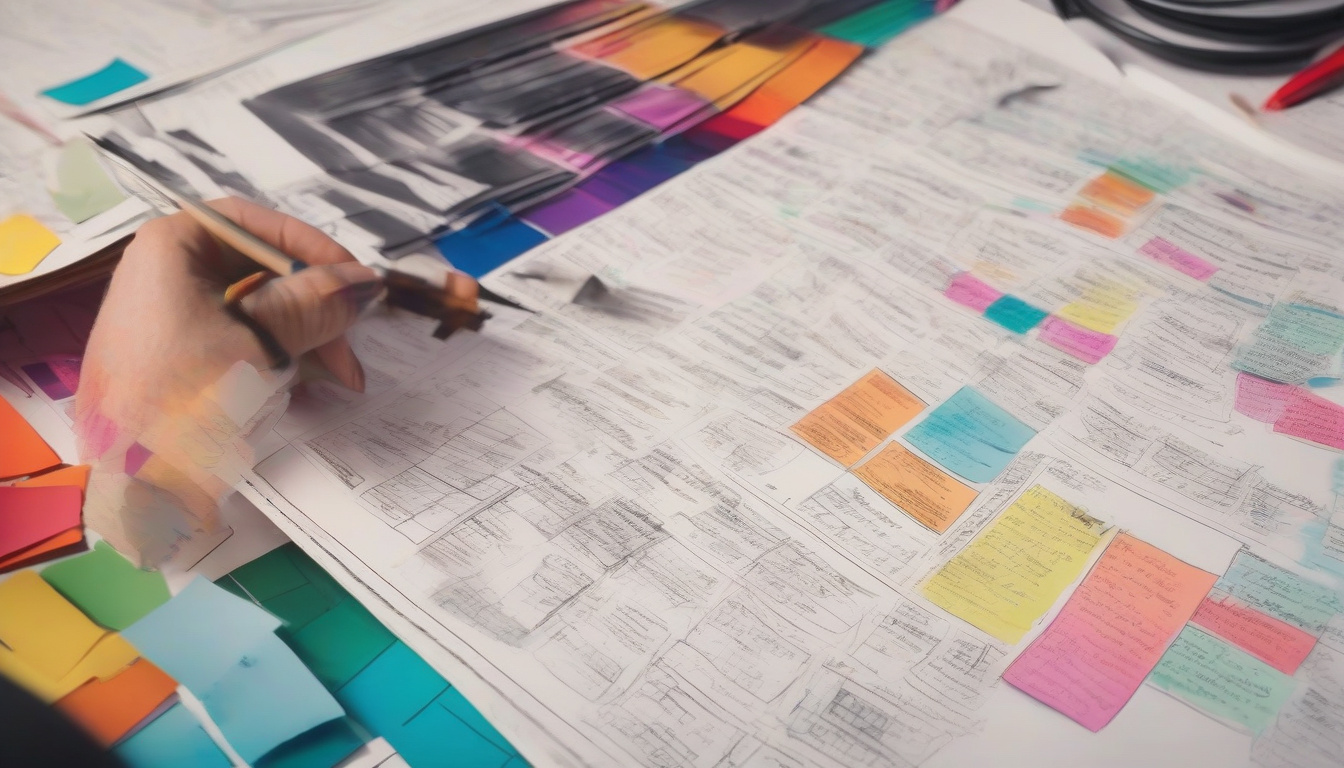
Effective filmmaking starts with a detailed understanding of the script, which is why mastering script breakdown techniques is essential for every filmmaker. A script breakdown involves analyzing a screenplay to identify and organize all the elements necessary for shooting, including locations, props, characters, special effects, and more. By breaking down the script efficiently, filmmakers can streamline the production process, manage budgets better, and ensure that every scene is executed smoothly.
In this article, we will explore the fundamental script breakdown techniques that will help filmmakers of all levels prepare their projects with clarity and precision.
What Is a Script Breakdown?
A script breakdown is the process of dissecting a screenplay scene-by-scene to list all the components needed to bring each scene to life. This exercise is crucial for various departments—production, art, costume, lighting, and more—because it guides scheduling, budgeting, and resource allocation.
Instead of passively reading the script, filmmakers engage actively by highlighting elements like cast, props, costumes, set dressing, special effects, stunts, and wardrobe changes. This comprehensive analysis allows the production team to forecast challenges and prepare accordingly.
Why Script Breakdown Is Critical in Filmmaking
Every successful film production owes much of its efficiency to a thorough script breakdown. Here’s why it’s crucial:
- Organizes complex information: It converts the narrative into tangible categories that are easy for different departments to interpret.
- Enhances communication: A well-done breakdown ensures that everyone—from the director to the production assistants—knows what is required in each scene.
- Improves scheduling: Knowing all elements upfront helps create realistic shooting schedules, reducing costly delays.
- Budget control: It identifies what resources are necessary, helping prevent overspending.
- Risk mitigation: Anticipates logistical or technical challenges, enabling proactive problem-solving.
Mastering script breakdown techniques is an indispensable skill that dramatically improves a film’s chances of staying on time and within budget.
Key Elements to Identify During a Script Breakdown
When breaking down a script, the goal is to extract and categorize every piece of information relevant to production. Below is a list of commonly identified elements during a script breakdown:
- Cast – Every character appearing in the scene, including extras.
- Extras – Background actors needed for the scene.
- Props – Movable objects that actors interact with.
- Set Dressing – Non-handled items that ambiance the scene.
- Wardrobe – Clothing requirements for characters.
- Special Effects (SFX) – Physical effects required on set.
- Visual Effects (VFX) – Effects to be added in post-production.
- Stunts – Any physical action requiring specialized performers.
- Makeup and Hair – Specific requirements per scene.
- Locations – Places where scenes will be shot.
- Sound – Important sound effects or audio cues.
- Time of Day – Day or night scenes that determine lighting needs.
- Vehicles and Animals – Special elements needing particular attention.
By categorizing these components, filmmakers can assign responsibilities properly and maintain clear oversight of all creative and logistical needs.
Step-by-Step Script Breakdown Technique
To master script breakdown, follow these structured steps:
1. Read the Script Thoroughly
Before beginning the breakdown process, read the entire script multiple times. Understand its narrative, characters, and tone. This familiarity helps identify nuances that could affect production.
2. Divide the Script Into Scenes
Most scripts are already page-formatted with scenes clearly marked. Segment the script visually, so you can tackle one scene at a time during breakdown.
3. Highlight Elements with Color Coding
Use a consistent color-coding system to mark different elements. For example:
- Yellow for cast
- Blue for props
- Green for locations
- Pink for costumes
Color coding speeds up the identification process and reduces confusion.

4. Use Breakdown Sheets
Fill out script breakdown sheets scene-by-scene. These sheets are designed to record all required elements, categorized and easy to reference for production meetings.
5. Create a Script Breakdown Report
Compile the individual scene breakdowns into a comprehensive report. This report becomes the primary reference for scheduling, budgeting, and departmental planning.
6. Collaborate with Departments
Share your breakdown report with key department heads to confirm the accuracy and completeness of the information.
Digital Tools for Script Breakdown
While manual scripts and physical annotation are useful, many filmmakers now rely on specialized software to enhance efficiency in script breakdown, such as:
- Final Draft: Industry-standard screenwriting software with built-in breakdown tools.
- Celtx: Offers script breakdown and scheduling features with cloud collaboration.
- StudioBinder: A production management platform that streamlines script breakdown, scheduling, and shot listing.
- Movie Magic Scheduling: Focused on production scheduling incorporating script lists and breakdowns.
These tools provide user-friendly interfaces and allow real-time collaboration, significantly reducing errors and duplicated effort.
Tips for Mastering Script Breakdown Techniques
- Start Early: Begin your breakdown as soon as the final script is locked to avoid last-minute stress.
- Be Detail-Oriented: Missing elements in the breakdown can cause costly delays on set.
- Communicate Often: Keep open lines with the director and department heads for clarifications.
- Update as Needed: Script changes happen constantly; ensure your breakdown reflects any rewrites.
- Leverage Templates: Use standardized breakdown forms to keep your work consistent and thorough.
Frequently Asked Questions About Script Breakdown
1. What is the difference between a script breakdown and a shot list?
A script breakdown identifies all production elements per scene, while a shot list is a detailed plan of camera angles and shots needed to film each scene. The breakdown comes first and informs the shot list.
2. How detailed should a script breakdown be?
A script breakdown should be as detailed as necessary to inform all production departments. This means including every character, prop, effect, and location specific to each scene.
3. Can script breakdowns change during production?
Yes. As scripts undergo revisions or unforeseen circumstances arise, breakdowns must be updated to reflect changes to maintain production efficiency.
Conclusion: Elevate Your Film Project with Expert Script Breakdown
Mastering script breakdown techniques transforms filmmaking from a daunting endeavor into a manageable, well-organized process. By thoroughly dissecting your screenplay and cataloging every essential element, you build a solid foundation for effective planning, resource management, and creative execution.
Invest the time and effort to learn this vital skill, utilize modern tools, and adopt a systematic approach. Doing so will save you time, reduce stress, and keep your production on track.
Ready to take your filmmaking to the next level? Start developing your script breakdown skills today—your future productions will thank you. For more in-depth guidance, explore industry resources like the Producers Guild of America for best practices and expert insights (source).






